Significance
The expansion of Le Cheng Temple during the Japanese Colonial Period was supervised by Tan Ing-pin (1864 – 1944), a master temple builder from mainland China’s Zhangzhou City. The temple’s five-door Sanchuan Hall boasts a beautiful, high double eave gable roof, making it one of Tan’s most unique works. This style of building influenced the architecture of later Taiwanese temples, and in fact was the springboard for the development of a localized design aesthetic in Taiwan. The eighteen-village pilgrimage of Hanxi Mazu (Hanxi refers to the name of the neighborhood where the temple is located) is the largest and longest—in both distance and duration—Mazu celebration parade in Taiwan. The pilgrimage dates back to the Qing Dynasty. Over the course of the Qing Dynasty, the Japanese colonial period, and the present day Republic of China era, the form of the pilgrimage has gradually changed and it has become an annual event in the Taichung region today, creating a strong bond among followers.
History
In the early years of Qianglong Emperor’s reign (around 1740), immigrants from China carried with them one of the statues of Mazu (named Laoerma) from Meizhou Mazu Temple in China (believed to be the first Mazu Temple in the world) to Taiwan in hopes of a safe and smooth journey to their new home. As they passed Le Cheng Temple’s current location, they were divinely inspired by the goddess and decided to establish a temporary shrine there. A building to house the shrine, Le Cheng Temple, was subsequently constructed in 1790. The temple then underwent a number of renovations, including the repairs to the main hall in 1924, after which followers went on a pilgrimage to Meizhou Mazu Temple to pay their respects to the original Mazu temple. In 1985, Le Cheng Temple was officially listed as a historic site in Taichung City. In 1991, the rear hall was built, and the temple complex as it stands today was complete. It is said that Hanxi Mazu’s eighteen-village pilgrimage began in the early 1800s as a measure of dispelling a severe invasion of insects that was destroying the rice crop. Farmers from the eighteen villages that comprise the Dali, Wuri, Taiping, and Wufeng Districts of modern-day Taichung City were grateful for the blessings of Mazu, and so the pilgrimage continued to be held, and grew in importance over the years. Today, the pilgrimage has become the longest religious activity in Taiwan in terms of distance covered and duration. Mazu’s tour begins on the first and ends on the twenty-second day of the third lunar month. The pilgrimage follows a set route, and followers then visit the temple on the twenty-third day of the third lunar month to celebrate Mazu’s birthday. In 2008, the eighteen-village pilgrimage by Hanxi Mazu was registered as an intangible cultural asset of Taichung City.
Special Features

1The Roof Style of the Sanchuan Hall The double eave gable roof (shēngān jiǎsìchuí) of Le Cheng Temple’s Sanchuan Hall is representative of “Pinsi” Tan Ing-pin’s early work in Taiwan. It streamlines the traditional East Asian hip-and-gable roof, while at the same time elevating the central section of the roof to another level, which is separated from the ridges of its adjacent side sections, resulting in multiple eaves. Structurally, the double eave roof is more complex. Its steep roof ridge rises higher than the traditional sanchuan roof ridge (a ridge cut into three sections by the additional gable in the middle) and its gables end in diagonal ridge extensions. Unlike the traditional East Asian hip-and-gable roof, the “hips” (the sections of roof stretching outward from the base of the gables) of the top roof are removed. This building design had a profound influence on later Taiwanese temples and served as the prototype for a localization of temple design traditions.
The double eave gable roof (shēngān jiǎsìchuí) of Le Cheng Temple’s Sanchuan Hall is representative of “Pinsi” Tan Ing-pin’s early work in Taiwan. It streamlines the traditional East Asian hip-and-gable roof, while at the same time elevating the central section of the roof to another level, which is separated from the ridges of its adjacent side sections, resulting in multiple eaves. Structurally, the double eave roof is more complex. Its steep roof ridge rises higher than the traditional sanchuan roof ridge (a ridge cut into three sections by the additional gable in the middle) and its gables end in diagonal ridge extensions. Unlike the traditional East Asian hip-and-gable roof, the “hips” (the sections of roof stretching outward from the base of the gables) of the top roof are removed. This building design had a profound influence on later Taiwanese temples and served as the prototype for a localization of temple design traditions.
2Yuánguāng in the Sanchuan Hall The yuánguāng, a heavily decorated extension beam located beneath the short beam that supports the eave, is used to ensure the structural stability of the vertical pillars. The two ends of the yuánguāng are generally curved to maintain a ninety degree angle and prevent deformation. The Yuánguāng is usually the largest single piece of wood in a temple that supports decoration and is an ideal place for craftsmen to illustrate their talent. Designs on yuánguāng usually contain flowers and birds or figures from literature who exemplify the virtues of loyalty, filial piety, morality, or justice. Backgrounds such as houses and mountains are often added to complement the designs. The yuánguāng found beneath the short beams of the Sanchuan Hall’s right and left sections were created by Tan Ing-pin’s disciple Ng Kui-li (1903 – 1995). Ng adopted the transparent sculpting method, in which designs are carved in different layers to render a rich, three-dimensional work, to produce these pieces, which highlight his superb sculpting skills.
The yuánguāng, a heavily decorated extension beam located beneath the short beam that supports the eave, is used to ensure the structural stability of the vertical pillars. The two ends of the yuánguāng are generally curved to maintain a ninety degree angle and prevent deformation. The Yuánguāng is usually the largest single piece of wood in a temple that supports decoration and is an ideal place for craftsmen to illustrate their talent. Designs on yuánguāng usually contain flowers and birds or figures from literature who exemplify the virtues of loyalty, filial piety, morality, or justice. Backgrounds such as houses and mountains are often added to complement the designs. The yuánguāng found beneath the short beams of the Sanchuan Hall’s right and left sections were created by Tan Ing-pin’s disciple Ng Kui-li (1903 – 1995). Ng adopted the transparent sculpting method, in which designs are carved in different layers to render a rich, three-dimensional work, to produce these pieces, which highlight his superb sculpting skills.
3Ancient Stone Lions of the Sanchuan Hall In Taiwanese lore, lions ward off evil and bad luck. The ancient stone lions in front of the central section of the Sanchuan Hall feature detailed craftsmanship and thick, rotund bodies, exemplifying the culture and customs of the time. The lion and lioness, which are placed on the left and right respectively, were carved in limestone and hold snake jasmine herb as a symbol of good luck. The lion, holding a stone bead in its mouth, faces outward and reaches out a paw as if to hold the temple door. The lioness, with her mouth closed, looks lovingly at the lion while gently supporting her cub with her paw in a show of loving tenderness.
In Taiwanese lore, lions ward off evil and bad luck. The ancient stone lions in front of the central section of the Sanchuan Hall feature detailed craftsmanship and thick, rotund bodies, exemplifying the culture and customs of the time. The lion and lioness, which are placed on the left and right respectively, were carved in limestone and hold snake jasmine herb as a symbol of good luck. The lion, holding a stone bead in its mouth, faces outward and reaches out a paw as if to hold the temple door. The lioness, with her mouth closed, looks lovingly at the lion while gently supporting her cub with her paw in a show of loving tenderness.
4The Inscription BoardA board inscribed with the phrase “shower of blessings” (fǎyǔhóngshī) hangs right above the Mazu statue in the Main Hall of Le Cheng Temple. It is an important Qing dynasty artifact. The board, made from a single piece of wood measuring 127 by 69 centimeters, is inscribed with beautifully written calligraphy as well as woodcarvings in the four corners. A pair of delicately sculpted lions adorns the frame. Although the characters on the board appear to be embossed, they are actually engraved. Information regarding the original recipient of the board cannot be found. However, information of the donor is shown on the board, noting that the board was “written by Liu Chun-lin of Suning and donated by Lin Chui-gong of Wufeng.” Liu Chun-lin (1872 – 1944) was a native of Suning County in Hejian Prefecture, Zhili Province during the late Qing Dynasty. In 1904, he was bestowed the title of “zhuangyuan” (the title given to the scholar who achieved the highest score on the highest level of the Chinese imperial examinations), making him the last zhuangyuan in Chinese history. The second donor, Lin Chui-gong was the son of Lin Lie-tang (1876 – 1947), a major landowner in central Taiwan. According to the History of Le Cheng Temple, Lin Lie-tang went to Beijing to serve a short term as a national legislator during the rule of the Beiyang government (the governing power of China and Taiwan from 1912 to 1927), led by Duan Qirui (1865 – 1936). However, no official data can be found to confirm this story.
5Hanxi Mazu’s Eighteen-Village Celebratory TourThe eighteen-village pilgrimage by Hanxi Mazu, held annually by Le Cheng Temple, has been referred to as the Great Banner Hanxi Mazu Parade because of the large banner that traditionally flies above Hanxi Mazu’s palanquin and which can be seen from afar as an announcement of her coming. The pilgrimage begins on the first day of the third lunar month after a prayer ceremony held at Le Cheng Temple. Upon the return of Hanxi Mazu’s palanquin to the temple, temple staff kneel down and wait for the palanquin to pass by in hopes it will dispel bad luck and misfortune, after which the parade draws to a close. The religious devotion of Mazu followers led to the birth and widespread use of the proverb “Hanxi Mazu protects even absent villagers,” meaning that regardless of where they go, devout followers of the goddess will be blessed.
The schedule of Hanxi Mazu’s eighteen-village pilgrimage is listed as follows (dates given below are all during the third lunar month):
1. On the 1st day, a prayer ceremony is held at Le Cheng Temple and the pilgrimage subsequently begins. This day’s parade goes around Xializai Village and ends with Mazu visiting Dongnu Cisheng Temple.
2. On the 2nd day, the procession moves on to Amili and Mazu rests at Guangming Village.
3. On the 3rd day, the parade is held in Wuzhangli, and Mazu stays at Wuguang Village.
4. On the 4th day, the parade moves to Wayaozai and Mazu rests at Fuxing Mazu Temple.
5. On the 5th day, a parade is held in Zhangcuoyuan; on the 6th day, in Datuliao; and on the 7th day, in Tianliaozai and Puzai. On all three days, Mazu is stationed in Sanxing Temple at night.
6. On the 8th day, the procession moves on to Liangsanshu and Mazu can be found at Wan’an Temple.
7. On the 9th day, the parade is held in Neixin Village and Mazu stays at Xinxing Temple.
8. On the 10th day, the parade continues in Chelongpu and Mazu visits Sanfu Wangyegong Temple.
9. On the 11th day, the procession moves to Tucheng and Mazu rests at Shengming Temple.
10. On the 12th day, the parade is held in Caohu and Mazu stays at Taizi Temple.
11. On the 13th day, the parade takes place in Azhaowu and Mazu is stationed at Kengkou Village.
12. On the 14th day, the procession goes to Liushunan and Mazu holds court at Nanliu Village.
13. On the 15th day, the parade is held in Wucuo Village and Mazu stops at Wufu Village.
14. On the 16th day, the parade takes place in Dingtai and Mazu rests at Xindeng Temple.
15. On the 17th day, the procession moves on to Shiluotan and Mazu stays at Luotan Village.
16. On the 18th day, the parade takes place in Kali and Mazu is stationed at Xinnan Temple.
17. On the 19th day, the parade is held in Xixinju and Mazu is stays at Nanxing Temple.
18. On the 20th day, the procession covers Qianzhu, Rende, Jiude, Shuzaijiao, Mashupu, Nantun, Tuku, Banpingcuo, and Dongshizai.
19. On the 21st day, the parade moves on to Xinping.
20. On the 22nd day, the procession goes through Yixin and Hanxi before returning to Le Cheng temple, completing the event.
Reminders
The eighteen-village pilgrimage by Hanxi Mazu, which is twenty-two days long, begins on the 1st day of the third lunar month and visits eighteen districts or villages in Taichung. The Mazu palanquin returns to Le Cheng Temple on the 22nd day of the third lunar month. On the 23rd day of the third lunar month, followers celebrate Hanxi Mazu’s birthday at Le Cheng Temple. Visitors are welcome to join any part or all of the event.
Panoramic
Directions